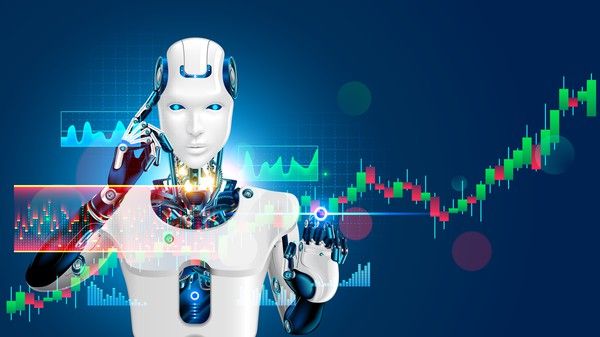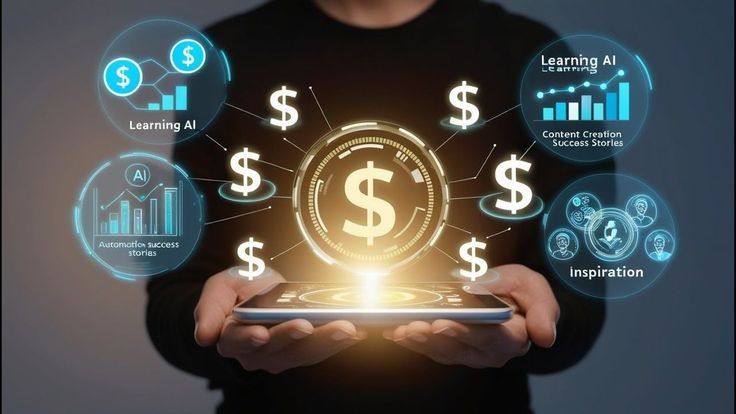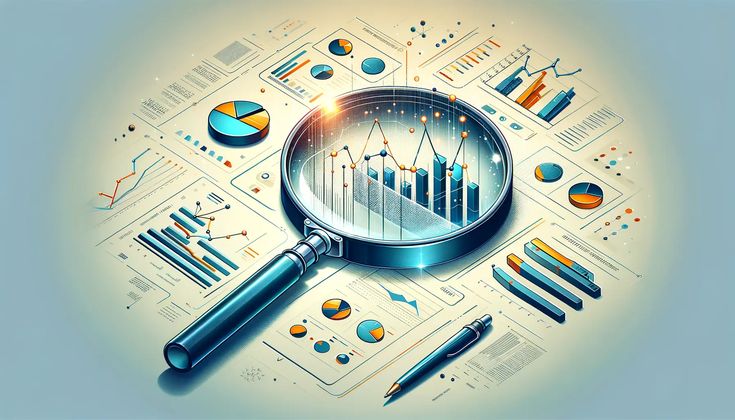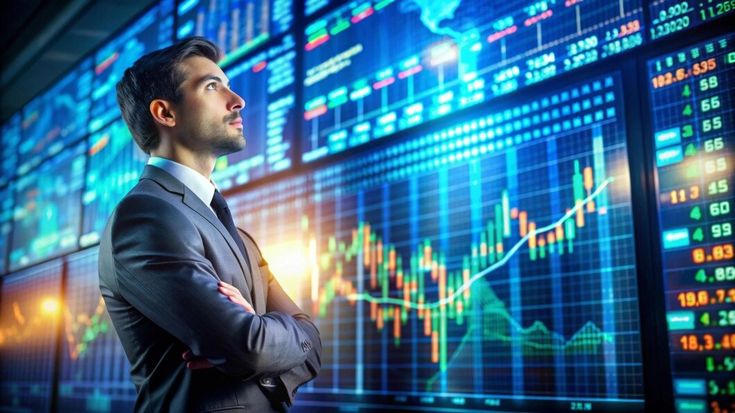1. Predictive Analytics for Market Forecasting

Artificial Intelligence (AI) empowers traders through advanced predictive analytics that leverage deep learning models and recurrent neural networks (RNNs). These models analyze vast amounts of historical data, technical indicators, and price trends to forecast future market movements with remarkable precision. AI identifies hidden correlations between data points that traditional statistical models fail to detect. By doing so, investors can make better-informed decisions about when to enter or exit trades, minimizing risks while maximizing returns. Predictive models continuously improve as they process new data, allowing traders to adapt their strategies in real time. For example, an AI system may forecast short-term volatility in response to interest rate announcements or geopolitical shifts. These insights give investors a competitive edge by helping them anticipate rather than react to market movements. Consequently, predictive analytics serves as a cornerstone of AI-driven trading, reshaping decision-making from speculation to data-based foresight.
2. Algorithmic and Automated Trading Execution
AI-powered algorithmic trading has revolutionized how trades are executed by eliminating manual intervention and emotional decision-making. Machine learning algorithms automatically analyze market conditions, liquidity, and volatility to determine the optimal moment to buy or sell securities. These systems execute trades within milliseconds, capitalizing on even the smallest market inefficiencies. AI-driven bots process complex datasets—such as order book depth, financial news, and macroeconomic indicators—to identify fleeting opportunities human traders might overlook.
Thank you for reading this post, don't forget to subscribe!They also adapt to evolving conditions, continuously recalibrating strategies for maximum efficiency. This automation not only increases speed and accuracy but also reduces transaction costs and human error. For institutional investors, AI ensures consistency and scalability, executing thousands of trades per second with minimal slippage. The rise of algorithmic trading marks a paradigm shift where intelligent automation drives higher profitability and operational excellence across global financial markets.
3. Continuous Learning and Adaptive Strategy Development

One of AI’s greatest strengths in stock trading lies in its capacity for continuous learning. Unlike static rule-based systems, AI algorithms dynamically evolve by integrating new data and adjusting their forecasts accordingly. Using reinforcement learning and neural networks, these systems analyze the outcomes of past trades to optimize future decision-making. This adaptability is vital in financial markets where conditions change rapidly due to news events, policy updates, or investor sentiment shifts.
By learning from both successes and failures, AI ensures strategies remain relevant and resilient. For example, an AI system may modify its risk tolerance after recognizing increased volatility patterns in specific sectors. Such adaptability prevents outdated models from generating false signals and keeps performance consistent. Ultimately, continuous learning enables traders to remain ahead of emerging trends, transforming AI into a self-improving analytical partner in financial decision-making.
4. Sentiment Analysis Using Natural Language Processing (NLP)
AI’s Natural Language Processing (NLP) capabilities enable it to interpret vast quantities of textual data from financial news, analyst reports, and social media platforms such as Twitter or Reddit. Through sentiment analysis, AI determines whether the market mood is bullish, bearish, or neutral. This insight allows investors to gauge public sentiment around companies, sectors, or the overall economy. By processing millions of posts and articles in real time, AI filters out irrelevant noise and misinformation, including fake news. For example, a sudden spike in negative mentions about a particular company could signal potential price declines, prompting traders to adjust their portfolios accordingly.
Institutional investors leverage these insights to make rapid, data-driven decisions that align with current market psychology. NLP-powered sentiment analysis provides a crucial psychological dimension to financial analytics, giving traders early warning signals based on evolving emotional and linguistic trends in public discourse.
5. Market Psychology and Investor Behavior Interpretation

AI doesn’t just read market data—it understands investor psychology by analyzing behavioral trends and decision patterns. Through behavioral analytics, AI identifies cognitive biases such as herd mentality, overconfidence, or loss aversion that influence trading behavior. These insights allow traders and fund managers to design strategies that mitigate impulsive actions and maintain emotional discipline. For instance, if AI detects a surge in retail traders following a trend without underlying fundamentals, it can flag a potential bubble formation. Understanding psychological drivers helps institutions anticipate large-scale market reactions and plan accordingly.
Moreover, AI-based behavior modeling improves investor education by highlighting recurring emotional patterns that lead to poor performance. By integrating psychology into quantitative analysis, AI creates a more holistic approach to trading, blending human intuition with machine precision to improve both decision quality and consistency in volatile markets.
6. Robo-Advisors and Portfolio Optimization
AI-driven robo-advisors have transformed investment management by offering automated portfolio rebalancing and optimization tailored to individual risk tolerance and financial goals. These platforms use advanced algorithms to analyze market trends and adjust asset allocations dynamically. For example, during a market downturn, AI may shift investments from equities to bonds or cash equivalents to preserve capital. Robo-advisors also simulate various economic scenarios to stress-test portfolios, ensuring long-term resilience.
The automation ensures investors maintain an optimal balance without manual intervention, reducing both emotional bias and transaction costs. Additionally, these systems personalize recommendations by learning from investor behavior and adapting to changing goals. This democratizes access to professional-level financial management, enabling even small investors to benefit from sophisticated, data-driven strategies that were once available only to institutional clients.
7. Risk Management and Fraud Detection
AI is revolutionizing risk management and fraud detection by monitoring massive amounts of financial transactions in real time. Using advanced machine learning algorithms, AI identifies abnormal patterns that might indicate insider trading, front-running, or other illicit activities. The systems instantly alert compliance officers and regulators when potential fraud is detected. Beyond detecting misconduct, AI evaluates overall market and credit risks by analyzing volatility, liquidity, and exposure data. Predictive analytics allow institutions to proactively hedge positions before major downturns. Deep learning models also minimize false alarms by recognizing complex, multi-dimensional risk signals rather than relying solely on fixed thresholds.
This leads to greater accuracy and fewer unnecessary interventions. AI’s ability to quantify and forecast risk transforms compliance from a reactive to a preventive function, thereby enhancing transparency, protecting investor interests, and reinforcing trust in global financial markets.
8. Real-Time Data Analytics and Decision Support

Financial markets operate at incredible speed, and AI enables traders to interpret real-time data streams instantly. It processes live order books, price feeds, and transaction records to detect emerging patterns or anomalies that demand immediate action. Through interactive dashboards, AI visualizes critical metrics—such as volatility spikes, liquidity shifts, or technical pattern formations—enabling traders to respond faster than ever. By integrating data from multiple sources, including economic indicators and sentiment feeds, AI creates a unified, real-time market intelligence system.
This immediate insight provides traders with a tactical advantage, particularly in high-frequency environments where milliseconds can define profit margins. Moreover, AI enhances decision-making accuracy by filtering irrelevant information and focusing on statistically significant trends. The result is faster, smarter, and more confident trading decisions that align with continuously shifting market conditions.
9. Predictive Maintenance in Trading Infrastructure
In high-frequency trading environments, system downtime can lead to substantial financial losses. AI-driven predictive maintenance ensures the continuous operation of trading infrastructure by identifying potential failures before they occur. It monitors network latency, server health, and transaction throughput to detect anomalies like system overloads or data bottlenecks. When irregularities appear, AI sends real-time alerts or initiates automated corrective actions, such as reallocating resources or restarting subsystems. This proactive approach minimizes downtime and prevents disruptions during peak trading sessions.
Additionally, AI optimizes hardware usage by analyzing performance data and scheduling maintenance when risks are lowest. Predictive maintenance not only reduces operational costs but also improves reliability and investor confidence. For financial institutions managing billions in transactions daily, maintaining system integrity through AI-powered monitoring is essential for seamless, uninterrupted market participation.
10. Event-Driven Market Reaction Analysis
AI excels at predicting how specific events—earnings announcements, mergers, policy changes, or geopolitical developments—impact stock prices. By analyzing historical event data and correlating it with market outcomes, AI models can forecast short-term price reactions. For instance, if similar past events triggered price surges in certain sectors, AI signals traders to take early positions. These systems also incorporate real-time sentiment and news data to assess potential reactions before events unfold. This allows traders to preemptively adjust positions and hedge against risks.
Event-driven trading strategies powered by AI have become standard among hedge funds and institutional traders, enabling precise timing and data-backed decisions. Ultimately, AI transforms unpredictable events into measurable trading opportunities by blending historical precedent with live analytical insight.
11. Quantitative Research and Model Development
AI streamlines quantitative research by automating model creation, data preprocessing, and hypothesis testing. Quantitative analysts (or “quants”) use AI tools to develop and backtest complex mathematical models that guide investment strategies. Machine learning algorithms identify the most relevant predictors of stock performance, reducing reliance on manual statistical modeling. Deep learning models, in particular, excel at detecting nonlinear relationships hidden within massive financial datasets.
This enables hedge funds to uncover subtle trading signals and exploit them for higher returns. Additionally, automation accelerates the research cycle—AI can test thousands of hypotheses in hours rather than weeks. This efficiency empowers firms to react swiftly to emerging trends. As AI continues to evolve, quantitative research becomes more precise, adaptive, and capable of handling the vast data complexity of global financial markets.
12. Natural Language Generation and Automated Reporting
AI-driven Natural Language Generation (NLG) automates the creation of financial reports, summaries, and performance analyses. These systems transform numerical data into coherent, human-readable narratives within seconds. For instance, after a trading session, AI can instantly generate an end-of-day market summary highlighting key movements, sector performance, and macroeconomic influences. Automation eliminates manual reporting errors and ensures consistency across documents. It also saves analysts countless hours, allowing them to focus on strategic decision-making rather than routine report writing. Financial institutions, hedge funds, and fintech platforms widely use NLG for generating client communications, regulatory filings, and market insights. The result is faster, more accurate, and cost-effective information dissemination, enhancing transparency and operational efficiency throughout the trading ecosystem.
13. Regulatory Compliance and Market Surveillance
Maintaining market integrity requires rigorous regulatory compliance, and AI automates this process effectively. By continuously scanning trading data, communication records, and order flows, AI identifies suspicious behaviors that may indicate rule violations. Machine learning models detect insider trading, price manipulation, or collusion patterns that manual audits might overlook. AI also creates detailed audit trails, recording each transaction’s context for transparency. Natural language algorithms monitor employee communications for compliance breaches. Regulators themselves adopt AI to track illegal activity across millions of daily trades. Automated compliance reduces penalties, enhances oversight, and fosters investor trust. Ultimately, AI ensures that markets remain fair, transparent, and efficiently regulated in an increasingly complex trading environment.
14. High-Frequency and Low-Latency Trading Enhancement

AI is central to high-frequency trading (HFT), where success depends on executing thousands of trades per second. These systems use deep reinforcement learning to analyze microsecond-level data, optimize execution speed, and minimize latency. AI evaluates order book dynamics, identifies arbitrage opportunities, and adapts to market microstructures in real time. Continuous algorithmic tuning ensures that HFT platforms maintain superior performance under varying conditions. Moreover, AI balances speed with precision, executing trades only when statistical probabilities indicate profit potential. In doing so, it prevents overtrading and enhances strategy sustainability. The integration of AI into HFT delivers unparalleled efficiency, giving firms a critical edge in liquidity provision and price discovery.
15. Economic and Sectoral Predictive Modeling
AI analyzes macroeconomic indicators—interest rates, inflation, GDP trends, and energy prices—to forecast sectoral performance. By integrating these metrics with stock market data, AI models predict which industries will benefit or suffer from economic shifts. For example, rising interest rates might strengthen banking stocks while weakening real estate. These predictive insights help institutional investors reallocate portfolios strategically. Additionally, AI tracks early warning signals of recessions or recoveries, enabling proactive planning. Such forecasts provide valuable guidance for long-term wealth management and capital allocation. By combining macro-level analysis with real-time market behavior, AI empowers investors to navigate complex financial environments with confidence and precision.
16. The Future of AI in Financial Markets
The integration of AI into stock trading represents a transformative leap toward intelligent, data-driven financial systems. As AI technologies evolve—particularly quantum computing and generative modeling—trading platforms will achieve even greater predictive accuracy and speed. Future AI systems will autonomously adapt to global economic patterns, integrating behavioral, technical, and geopolitical data into unified decision frameworks. Moreover, AI’s role in enhancing financial inclusivity will expand through personalized investment tools accessible to retail investors. Ethical and transparent AI governance will also become a priority, ensuring fair and accountable trading ecosystems. Ultimately, AI will redefine financial intelligence by merging automation, prediction, and adaptability into a cohesive framework that drives stability, profitability, and long-term growth in global markets.



